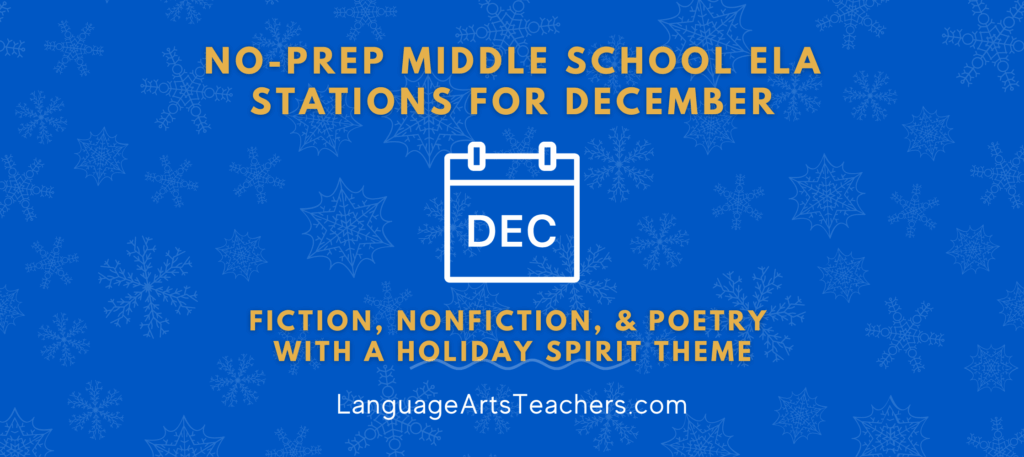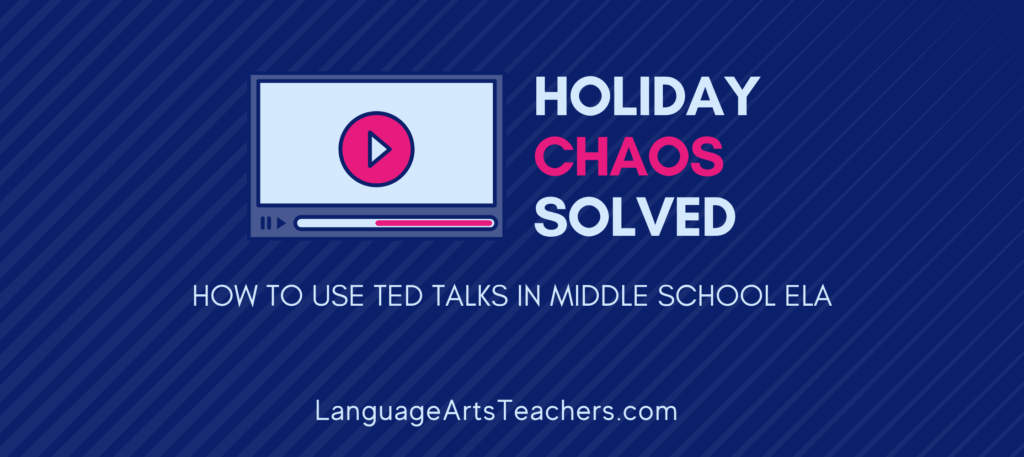When it comes to nonfiction or expository texts, it’s not always the easiest type of unit to get your students excited about. It can be easy to sell fiction or drama to your students as it’s a way for them to travel to faraway lands and get wrapped up in a new world, but nonfiction typically doesn’t have those same draws.
Creating a relevant, engaging nonfiction or expository unit is exactly what I sat down to talk about (and later write about here for this article) with guest expert Amber McMath of https://www.imthatteacher.com. If you missed our conversation during the MSELA Summit (the virtual conference for Middle School ELA Teachers), then click here to check out all the topics, including how to plan your 6th, 7th, or 8th grade nonfiction / expository unit).
Here’s what we learned from the MSELA Summit conversation with the creative and genius mind of Amber McMath:
A better understanding of the terms “nonfiction, expository, and informational” for new teachers
For new teachers, or for experienced teachers new to Middle School ELA, it’s important to have a clear understanding of the terms “nonfiction,” “expository,” and “informational.” I don’t want to assume that every teacher here automatically understands those terms, so let’s just break it down super quickly to keep us all on the same page.
Fiction and nonfiction are the two broad categories of literature. Nonfiction is anything that is true, while fiction is anything that is made up. Expository texts are a type of nonfiction text that is designed to explain something or to provide information.
Informational texts are another type of nonfiction text that is designed to inform the reader about a particular topic. Let’s familiarize our students with these terms because they will likely come up on standardized tests and other assessments. By knowing the definitions of these terms, students can better understand the types of texts they will encounter through your class and for what they learn in the years afterwards.
Favorite ways to begin the unit
You are probably coming from a poetry unit or fictional unit, so draw on something that students are already familiar with. Everyone in the classroom is an expert in something, so have students come in one day and explain or share about a topic or skill that they are an expert at.
It can be anything that they want: playing a sport or a game, taking care of an animal, finding the best beaches in Florida, a hobby they work at outside of school, anything! Students will then share their expertise, teaching or explaining what they know in their own way. Nothing is formal here yet! No rubric—just let them explain and share in small groups or in Google Slides. They will learn more about creating an informational text and what that is, which will help them to better understand what nonfiction is.
Later, you can take that initial experience and expand on it by adding in the following concepts and explaining how they work in informational text.
Vocabulary: If a student is explaining something very specific or detailed, others in the room may not know what those words mean. An example might be explaining a certain component of a saxophone if the student plays that instrument. From here, you can explain how in informational text, you may need to spend extra time learning a definition and what it means to that text.
Text Structure: The structure of informational text will be different from one student to the next as they explain their expertise. The structure depends on the purpose of the information: How-to, chronological order, problem / solution, compare / contrast, description / explanation, etc. When students can think about which text structure makes the most sense in what they are trying to share, they’ll be able to recognize it in all kinds of other nonfiction texts. From there, they’ll be able to start thinking about why an author chose a particular text structure to convey an idea as well as how the quality of information might change if the author had chosen another type of structure.
The main skills that a student should learn from this unit
When it comes to informational text, some of the main skills that students should be learning are how to quickly research the info they need, what types of sources are credible, and how to ask really great questions so they can dive deeper into a topic. Gleaning information from images, videos, infographics, etc. are also part of the informational / expository unit that students will rely on, too. Let students experiment with how to search, start over, change the types of questions they’re asking, and discover what they are looking for.
Giving students multiple opportunities to talk with each other and share ideas about what they’re reading in nonfiction texts (like articles, passages, and excerpts they encounter throughout a nonfiction unit) is equally as powerful as the research component.
For ideas about what “talking about nonfiction” can actually entail, check out my wildly popular “Tents for Talking” that puts the discussion on the students while freeing you and them from meaningless, tedious worksheets.
Engaging Ways to Embed Both Reading and Writing into a Unit
Explain the importance of informational text and the value that it will add to their lives. For instance, bring in a copy of a traffic citation, or a water bill, or a home or auto insurance estimate. These are definitely not fun to have to read, but it’s absolutely part of real life and it’s a perfect opportunity to show students what real-world applications exist for nonfiction. It’s a prime time to show them that not everything we do in life is super fun, but that it’s super important to practice the skills of nonfiction (and what the implications can be if we simply give up every time something isn’t ‘fun’). I like to share these kinds of documents (with my address and account numbers removed, of course) with my students. I let them explore the documents and I let them share with each other and with me what they discover. I let them ask questions and then dive back into the text to try to discover the answers (What is this tax added on for? What happens if your house floods but it’s not from a broken pipe?). Fiction is fun, but informational text is critical to living in today’s society.
More Creative Ways to Engage Middle School ELA Students in Nonfiction Texts
Picture Books: Lay out a bunch of picture books and have students read and learn about a topic. After that, you can have them write about it and explain what they learned from the books. You don’t even need to tell them that they are nonfiction books. Amber McMath, guest speaker during the MSELA Summit, presented specific nonfiction picture books that she uses with great success to introduce her nonfiction unit!
Infographics: Infographics sometimes have a lot of information, and you can teach students how to focus and lock in on the key information that they need to get, based on what their own questions are. And it will be that much more engaging for them as there are images, graphs, and numbers to help tell the story as well.
Articles: Talk about the “hook” in an article and what information is portrayed. Talk about the intro and conclusion, as well as what else readers might be wondering about (and where or how students could get more information or alternative information).
Excerpts from Informational Books: Talk about the heading, subheadings, and how to quickly locate information when researching a topic (table of contents, index, etc).
Photographs and Videos: This is a simple and engaging way for students to gather a more personal look into a specific topic.
Interviews: Watching or reading an interview can help students better understand various perspectives around an event and to get ideas for what other information needs to be gathered on a topic.
Documentaries: Another resource to incorporate into a nonfiction unit is a documentary, as it will include photos, videos, interviews, etc.
The Average Amount of Time to Spend on a Middle School ELA Nonfiction Expository Unit
Typically on average, you will want to spend 4-6 weeks on a unit, but that also depends on what you have already taught and gone over. If you are meshing multiple units together (research, writing, etc.), you can make your unit a little longer.
A big point is allowing students to do a lot of research on their own, based on questions they’re asking and things they’re wondering about. Encourage this process and allow them to research and answer questions that they may have. Feed their desire to learn and research information on their own, guiding them through asking better-quality questions and using credible resources to gain answers.
Get all the strategies and plans you need for Middle School ELA from the 5-day virtual conference I host specifically for 6th, 7th, and 8th Grade Reading & Writing Teachers! It’s the MSELA Summit, and it has 30 hours of on-demand sessions (and PD Certificates!) for you about unit planning, tech tools, classroom management, reading and writing strategies, and more that you can use all year long.





